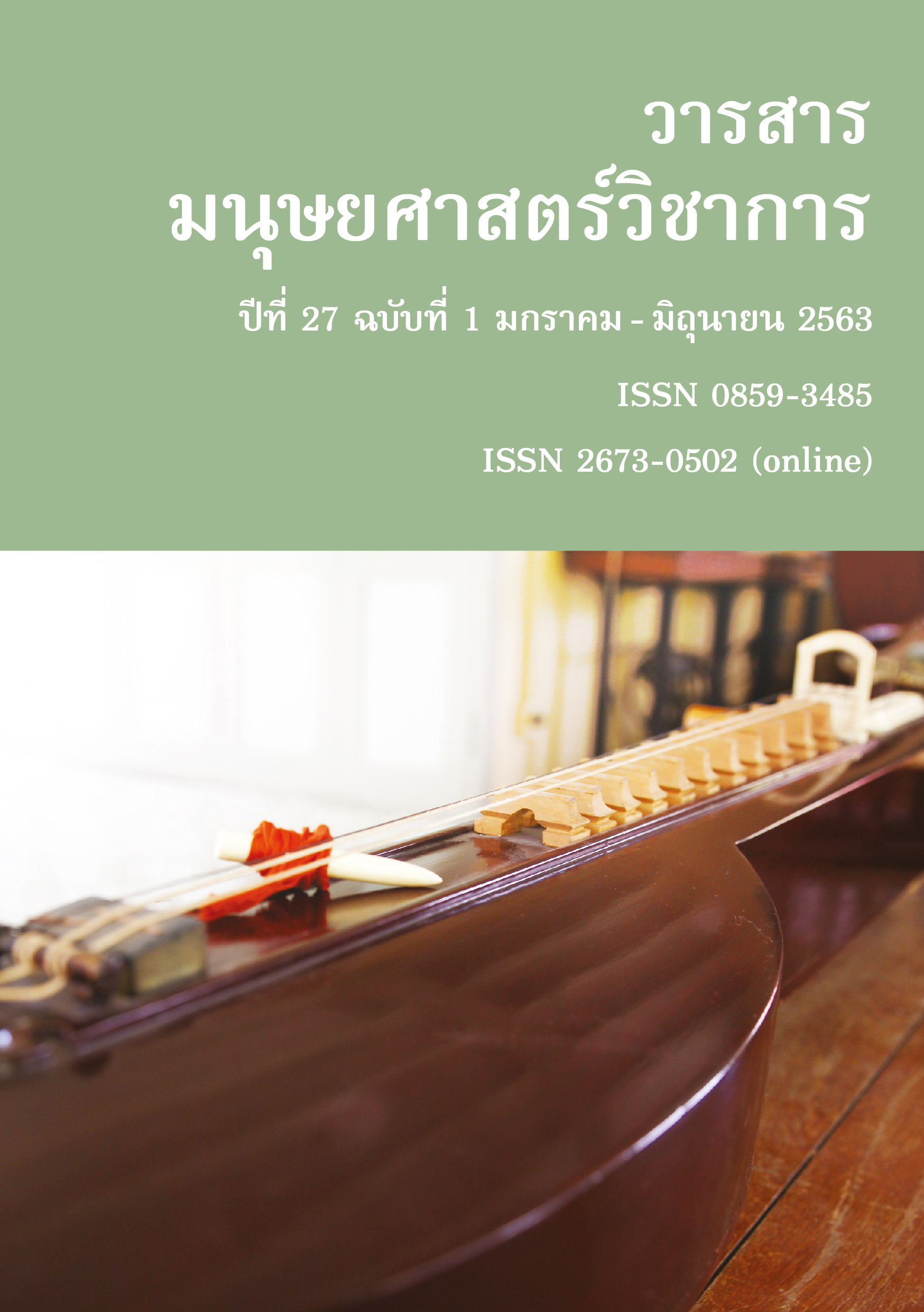Gem Appraisal System in Indian Lapidaries
Main Article Content
Abstract
The idea of gem trade is one of the real essences of Indian lapidaries. The purpose of this research is to investigate the historical background and characteristics of gem appraisal system established in Indian lapidaries. The study was focused on the origin, characteristics, and relative values of weight and currency standards, as well as the appraisal model in which the diamond tariffs were exemplified. The research data were substantially collected from three Sanskrit encyclopædic works, i.e. Varāhamihira’s Bṛhatsaṃhitā, Bhoja’s Yuktikalpataru and Śukrācārya’s Śukranītisāra, including collaborative sources – Kauṭilya’s Arthaśāstra and Manusmṛti. The findings revealed that the gem tariffs systematically varied, from one time to another, with either rate pricing model or weight and currency standard changed. The findings also suggested the continuity and change in the traditional system of weight and currency during Indian antiquity until the universal standard of gem appraisal was adopted.
Article Details
References
Basu, B. D. (1914 ). The sacred books of the Hi ndus: The Sukranīti: Translated by various Sanskrit scholars (Vol. XIII). Allahabad: Indian Press.
Beinert, R. A. (2003). Windows on a medieval world: Medieval Piety As Reflected In The Lapidary Literature Of The Middle Ages. (Master’s Thesis), Memorial University of Newfoundland, Newfoundland.
Bhat, M. R. (2003). Varāhamihira’s Bṛhat Saṃhitā Part Two: with English Translation, Exhaustive Notes and Literary Comments. Delhi: Motilal Banarsidass.
Burns, A. R. (1965). Money and Monetary Policy in Early Times. New York: Routledge.
Kangle, R. P. (2014a). The Kauṭilīya Arthaśāstra Part I: Sanskrit Text with a Glossary. Delhi: Motilal Banarsidass.
Kangle, R. P. (2014b). The Kauṭilīya Arthaśāstra Part II: An English Translation with Critical and Explanatory Notes. Delhi: Motilal Banarsidass.
Kenoyer, J. M. (2010). Measuring the Harappan world: Insights into the Indus order and cosmology. In I. Morley & C. Renfrew (Eds.), The Archaeology of Measurement: Comprehending Heaven, Earth and Time in Ancient
Societies (pp. 106-121). New York: Cambridge University Press.
Lapidaries. (2005). In T. Glick, S. J. Livesey, & F. Wallis (Eds.), Medieval Science, Technology, And Medicine (pp. 306-307). New York: Routledge.
McIntosh, J. R. (2008). The Ancient Indus Valley: New Perspective. California: ABC-CLIO.
Oppert, G. (1882). Śukranītisāra Vol. I.: Text, Variae Lectiones, &c. Madras: E. Keys at the Government Press.
Prasad, P. C. (1997). Foreign Trade and Commerce in Ancient India. New Delhi: Abhinav Publications.
Radha Kanta Deva. (1967). śvetakaṃ, śvetakaḥ Śabdakalpadruma or An Encyclopædic Dictionary of Sanskrit Words Arranged in Alphabetical
Order (Vol. 5, pp. 181). Varanasi: Chowkhamba Sanskrit Series Office.
Ratnaparīkṣā of Buddhabhaṭṭa. (1896). In L. Finot (Ed.), Les Lapidaires Indiens (pp. 1-58). Paris: Librairie Émile Bouillon.
Sarkar, B. K. (2008). The Positive Background of Hindu Sociology: Non-Political (Vol. I). Delhi: Cosmo Publications.
Shastri, N. G. (Ed.) (1935). Śrīḥ Manusmṛitiḥ : śrīkullūkabhaṭṭapraṇītayā manvarthamuktāvalyā kṣepakapariśiṣṭaślokairakārādikośena ca sahitā (The Manusmriti with the manvarthamuktavali commentary of Kulluka Bhatta) Benares: Chowkhambha Sanskrit Series Office.
Smith, R. L. (2009). Premodern Trade in World History. New York: Routledge.
Tripāṭhī, A. V. (1968). Bṛhat Saṃhitā (Part II) by Varāhamihira: with the Commentary of Bhaṭṭotpala. V aranasi: V aranaseya S anskrit Vishvavidyalaya.


